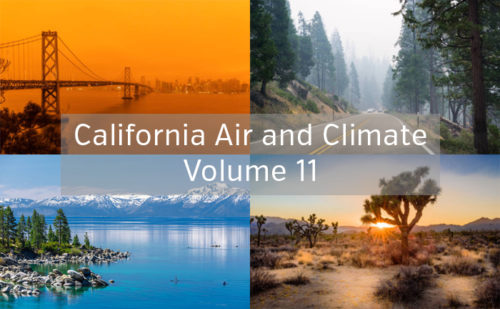California Air and Climate: CARB Continues Roll-Out to Reduce Emissions from Vessels in California Ports and Targets Ride-Hailing Vehicle Greenhouse Gas Emissions; Update on AB 617
November 2019
California Air and Climate, Vol. 11
CARB Continuing Roll-Out of Revised Regulations to Reduce Emissions from Ocean-Going Vessels in California Ports
On December 5, 2019, the California Air Resources Board (CARB) will hold a public hearing in Oakland, California, on CARB’s proposed regulations to further reduce air pollution from ocean-going vessels that are “at berth” or docked in California ports and marine terminals. Under existing regulations, certain container vessels, reefer vessels, and passenger cruise vessels that visit specified California ports are subject to certain restrictions aimed at reducing emissions from diesel auxiliary engines. Fleet operators may comply by reducing onboard power or auxiliary engine usage according to mandated percentages in relation to the number of annual visits within the fleet. Alternatively, fleet operators may reduce vessel emissions by a mandated percentage below the fleet’s baseline emissions. According to CARB, the Board’s proposed regulations are designed to achieve added public health and air quality benefits by further reducing oxides of nitrogen (NOx), diesel particulate matter (DPM), particulate matter 2.5 (PM2.5), reactive organic gas (ROG), greenhouse gas (GHG) emissions, and black carbon beyond existing regulations. CARB’s proposed regulation accomplishes this by introducing emission control requirements to additional ports and terminals, including marine terminals that operate independently from a port or port authority, and adding other vessels such as ro-ro (roll-on/roll-off) vessels that carry cargo such as cars and trucks, as well as tankers, which are not covered under existing regulations.
The Initial Statement of Reasons and proposed regulations are available on CARB’s website here.
CARB Targets Ride-Hailing Vehicle Greenhouse Gas Emissions
CARB recently reported its preliminary findings that ride-hailing vehicles generate 75 percent more GHG emissions per passenger miles travelled than the average California vehicle. As part of its effort to implement SB 1014, which requires reductions in GHG emissions from ride-hailing cars below 2018 levels by 2023, CARB is collecting data to set the 2018 baseline. CARB’s preliminary results find that ride-hailing cars are slightly more fuel efficient than the average vehicle on California roads, but the significant percentage of time ride-hailing vehicles operate without a passenger result in much higher emissions per passenger mile traveled. SB 1014 requires CARB to adopt GHG targets for ride-hailing companies by 2021. The California Public Utilities Commission will then develop and enforce regulations implementing the goals.
Additional AB 617 Priority Communities Proposed
On October 30, CARB announced three new communities CARB will propose to include in the AB 617 Community Air Protection Program. Last year, CARB selected the initial ten communities under this program to be targeted for programs including air pollution monitoring, emissions reductions, enforcement, and incentives. We covered CARB’s initial selections here. The communities proposed for inclusion in 2019, which are identified as facing disproportionate impacts from multiple sources of air pollution, are Southwest Stockton, Eastern Coachella Valley and South East Los Angeles. CARB staff plans to present these recommended communities for adoption at the December 12-13 CARB governing board meeting.

